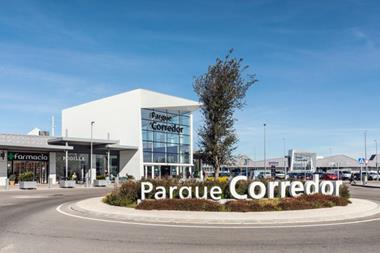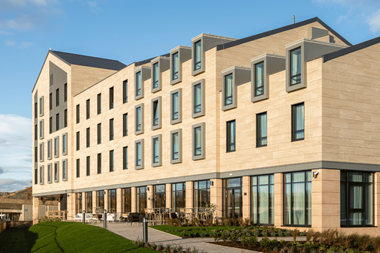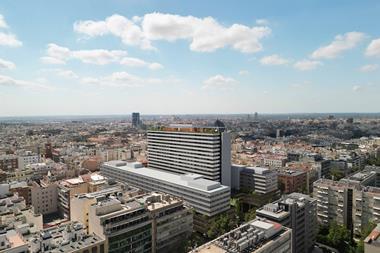Algebra is not normally my thing but this week I sat up and took notice when Thomas Sevcik, managing director of Swiss urban planning consultancy Arthesia, presented an intriguing formula at the ULI Trends conference in London. To describe the total value (Vtot) of cities, this is what he came up with: Vtot = (n!) + p + c
Algebra is not normally my thing but this week I sat up and took notice when Thomas Sevcik, managing director of Swiss urban planning consultancy Arthesia, presented an intriguing formula at the ULI Trends conference in London. To describe the total value (Vtot) of cities, this is what he came up with: Vtot = (n!) + p + c
On the other side of the equation, (n!) stands for ‘all functions’, p for ‘public space’ and c for ‘connectivity’.
To my own surprise, I got it.
I attribute this not to any cleverness of my own but to the logic of Sevcik’s own thinking. OK, I admit I didn’t get it straightaway. But after his enthralling presentation, I felt a little bit smarter about the topic of density and excited about the idea that the real estate industry has a unique opportunity to reshape our urban environment.
Indeed, that in a nutshell was the key takeaway of the entire ULI conference. But there is still a lot of work to be done to create the right conditions in which this can take place. As Isabel Dedring, London's deputy mayor for transport put it, the public and private sectors need to collaborate to showcase best practices in dealing with the challenges of urbanisation and density.
‘It's the responsibility of both the public and private sectors to form a new narrative for density,’ she said during a panel discussion on the future of the built environment and challenges to successful cities. ‘It's our general responsibility to educate the community…we can get there without it, but it will be painful and it will take 10 times longer.'
Negative connotations of density
The word 'density' has negative connotations, conjuring up images of single-use housing blocks and even ghettos, ULI Europe CEO Lisette van Doorn acknowledged in her introductory address. ‘But 89% of our members believe that density has become important over the past five years. That is the main theme for this conference and for our work over the next couple of years. We believe that good density offers great advantages to cities, makes them thrive, better connected and with a lower carbon footprint.'
As population growth continues and the world urbanises, as new cities emerge and older cities are re-populated, policy makers face the challenging question of how to accommodate more people, Greg Clark, senior fellow at ULI Europe, told the conference during the presentation of his latest report 'Density: drivers, dividends and debates.'
Picking up on the negative connotations of 'density' and 'doomed' examples of ghettofication of certain groups of the community, Clark argued that the lessons have only been partially learned. 'There is a long memory of failed density projects which creates political and civic resistance.'
A gap exists between the negative attitudes to density in the minds of politicians and citizens and what the real estate industry has come to regard as general knowledge and broad insights, Clark said. 'There is a need for a fundamental education programme and debate about which cities have densified effectively. We need to provide evidence through case studies and create a more positive agenda around density.'
Step in the right direction
This week’s ULI Trends conference with a significant number of representatives from the public sector as well as researchers, architects and investors was certainly a step in the right direction. Chris Luebkeman, fellow and director of research & innovation at UK-based engineering group Arup, set the scene with some fascinating insights into new mental maps where the burden of the ageing society is viewed as an opportunity for families to live with extended families.
‘Society is remembering the values of the village and we are seeing greater desire to have the village opportunity.'
During his morning address, Luebkeman set out the parameters for the current generation of urban planners, developers and landlords. ‘There are four things I have learned in terms of my thinking about the future. Change is constant; the future is fiction; participation is what shapes our world; and everything inconvenient will change.’ In other words, the real estate industry has the task – and responsibility – to create the future by collaborating with people and collecting their stories.
In the afternoon, Sevcik embroidered further on these ideas with his exposé of how the digital world is reshaping the way we need to think about our environment. The penetration of the smartphone in our daily lives has led to the proliferation of online information channels. We no longer need to go to the village pump to hear the latest news: we have news at our fingertips. Increasingly, the impulses that we are exposed to on the high street are now emanating from the apps on our smart phones: the physical world is becoming an extension of our virtual reality.
In fact, the virtual world is determining human behaviour and movement in the city, Sevcik said. ‘This data is subsequently processed in specialised apps informing drivers that they would be better off going to another parking garage. In other words, people will go somewhere in the city with a specific goal and via a specific route which is determined by an app on their smartphone.’
The rise of the 'clickizen'
These changes are having enormous repercussions on both urban centres and real estate, Sevcik said. ‘The rise of new forms of working, online shopping, car sharing, Airbnb is changing the importance – and value – of offices, parking facilities and mid-segment hotels.’
Another trend that Sevcik has identified is that of zero emission. Manufacturing processes are becoming cleaner and quieter, energy is being produced via solar panels instead of coal-fired power stations, electric cars are becoming more widespread and worldwide cities are promoting cycling. Sevcik draws a parallel with a Rubik’s cube. ‘Through urban digitalisation and zero emission cities will see endless combinations of all sorts of possible functions in terms of living, working, shopping, recreation and leisure,’ he predicted.
Even manufacturing facilities are returning to the city, Sevcik said. One of the projects that his company Arthesia is involved in is Volkswagen’s Glass Factory right in the heart of the old centre of Dresden where the carmaker’s top brands Phaeton and Bentley are produced. The complex also provides other facilities including lunchrooms, restaurants, a gallery and a concert hall. This mix of functions is possible due to the fact that the production of these cars does not produce any noise or air pollution.
These trends have far-reaching implications for the real estate industry. What is the value of an office building in a world where flexible working conditions are becoming increasingly important? What is the value of a retail unit on a high street where shoppers look but don’t buy? Older generations – the ‘flipizens’ – may still turn to the white pages to find a store, but new generations of ‘clickizens’ are not interested in ownership in the traditional sense and expect seamless mobility.
In the new algebra of cities, developers and landlords need to work closely together with urban planners to counterbalance the idea of ‘location, location, location’. Increasingly ‘access, access, access’ is becoming equally important.
Judi Seebus
Editor in chief










